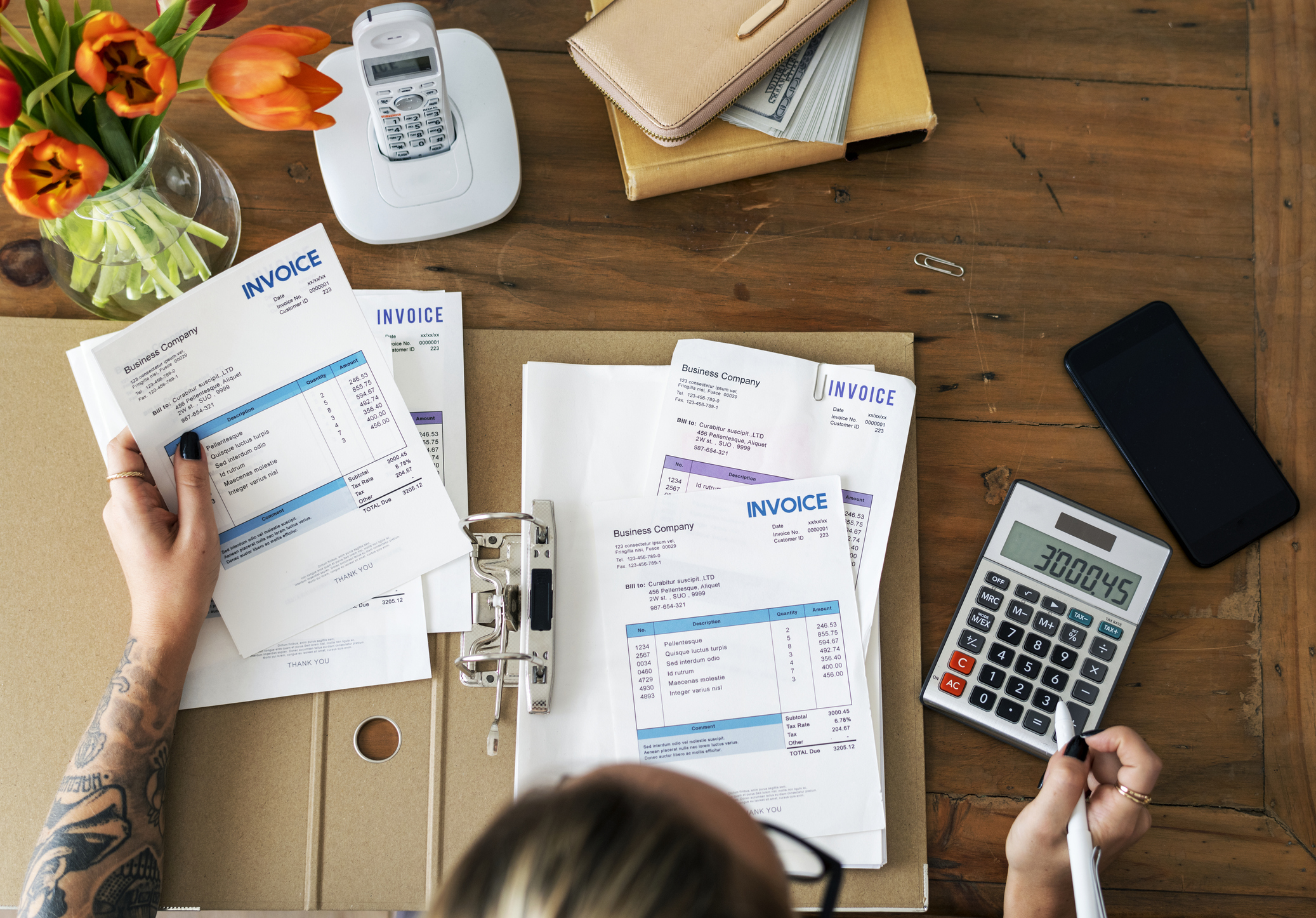By: Jennifer Brazer
Jennifer is the author of From Cubicle to Cloud and Founder/CEO of Complete Controller, a pioneering financial services firm that helps entrepreneurs break free of traditional constraints and scale their businesses to new heights.
Fact Checked By: Brittany McMillen
Effective Principles of Drug Addiction Treatment Explained
Principles of drug addiction treatment establish the foundational framework for successful recovery, combining evidence-based medical interventions with personalized behavioral therapies to address the complex biological, psychological, and social factors of substance use disorders. These core principles guide treatment providers in developing comprehensive care plans that recognize addiction as a chronic, treatable brain disease requiring sustained support and multifaceted approaches.
In my two decades leading Complete Controller, I’ve witnessed how systematic, principle-based approaches transform outcomes—whether in financial services or healthcare. The parallels are striking: just as businesses thrive with customized strategies and continuous support, addiction recovery succeeds when treatment follows proven principles that adapt to individual needs. This article breaks down the essential principles that drive effective treatment, offering insights into medication-assisted treatment success rates of 60% versus traditional detox programs at 5-15%, the critical 90-day treatment duration benchmark, and innovative approaches reshaping recovery landscapes. You’ll gain practical understanding of how behavioral therapies, medications, and holistic care work together to build lasting recovery foundations.

What are the principles of drug addiction treatment?
- Core Answer: Evidence-based medical interventions, individualized behavioral therapies, medication management, adequate treatment duration, and comprehensive support systems addressing biological, psychological, and social factors
- Medical Interventions: Supervised detoxification, medication-assisted treatment (MAT), and management of co-occurring physical health conditions
- Behavioral Therapies: Cognitive-behavioral therapy (CBT), contingency management, motivational enhancement therapy targeting thought patterns and behaviors
- Treatment Duration: Minimum 90-day engagement periods with flexible continuity plans based on individual progress assessments
- Holistic Support: Integration of vocational training, family therapy, peer networks, and community resources for sustained recovery
Understanding Addiction as a Chronic, Treatable Condition
Addiction fundamentally alters brain structure and function, creating persistent changes in neural pathways that govern reward, motivation, and decision-making. Medical research demonstrates measurable differences in brain scans between individuals with substance use disorders and those without, confirming addiction’s status as a legitimate medical condition rather than a moral failing.
The chronic disease model positions addiction alongside diabetes, hypertension, and asthma—conditions requiring ongoing management rather than one-time cures. This perspective shifts treatment focus from expecting immediate, permanent abstinence to building sustainable management strategies that account for potential setbacks. Research shows 91% of opioid users experience relapse after traditional detox programs, with 80% relapsing within the first month, highlighting why continuous care models prove essential.
Treatment effectiveness improves dramatically when providers adopt chronic disease management principles. This includes regular monitoring, medication adjustments, lifestyle modifications, and relapse prevention planning. Success metrics expand beyond simple abstinence counts to include improved functioning, reduced criminal activity, enhanced employment stability, and restored family relationships.
Individualized Treatment Planning
Every person entering treatment brings unique biological factors, psychological profiles, substance use patterns, and life circumstances that demand customized intervention strategies. Standardized, one-size-fits-all programs consistently underperform compared to individualized approaches that match services to specific client needs.
Comprehensive assessments evaluate multiple dimensions: substance use severity, physical health status, mental health conditions, readiness for change, relapse potential, and recovery environment stability. Treatment providers use validated screening tools like the Addiction Severity Index to identify priority areas and allocate resources effectively. Cultural competence plays a vital role, with programs adapting to serve diverse populations based on age, gender identity, ethnicity, sexual orientation, and socioeconomic background.
Key components of individualized plans
- Substance-Specific Protocols: Different drugs require distinct detoxification procedures and medication options
- Co-occurring Disorder Integration: Simultaneous treatment for mental health conditions affecting 50% of individuals with substance use disorders
- Trauma-Informed Care: Addressing underlying trauma histories present in 75% of treatment-seeking populations
- Family Involvement Levels: Determining appropriate family participation based on relationship dynamics and client preferences
- Recovery Goal Setting: Collaborating with clients to establish realistic, measurable objectives aligned with personal values
Early Intervention and Treatment Accessibility
Treatment engagement within 24-48 hours of initial contact dramatically improves retention rates and long-term outcomes. Delays between help-seeking moments and service availability create windows for ambivalence, continued use, and potential overdose events. Same-day admission programs report 40% higher completion rates compared to waitlist models.
Healthcare systems increasingly embed screening and brief intervention protocols in emergency departments, primary care offices, and criminal justice settings. These touchpoints identify at-risk individuals before severe consequences emerge. Mobile treatment units, telehealth platforms, and walk-in assessment centers remove traditional barriers like transportation, scheduling conflicts, and lengthy intake procedures.
Warm handoff procedures connect individuals directly from identification points to treatment providers, maintaining momentum during vulnerable transition periods. Case managers accompany clients through initial appointments, insurance navigation, and program enrollment processes. This high-touch approach particularly benefits populations experiencing homelessness, lacking health literacy, or facing multiple systemic barriers.
Comprehensive Care Addressing Multiple Needs
Effective substance abuse treatment extends far beyond addressing drug use alone, recognizing that sustainable recovery requires stability across multiple life domains. Treatment programs achieving highest success rates integrate medical care, mental health services, vocational support, legal assistance, and family counseling within coordinated service networks.
Medical needs often include managing withdrawal symptoms, treating infections common among injection drug users, addressing chronic pain without opioids, and monitoring medication interactions. Mental health integration proves particularly crucial given that dual diagnosis clients experience 50% higher relapse rates when conditions remain untreated. Coordinated care teams communicate regularly, sharing treatment plans and progress updates to maintain consistency across providers.
Essential service components
- Housing Assistance: Stable living environments reduce relapse risk by 65%
- Employment Support: Job training and placement services restore purpose and financial independence
- Legal Advocacy: Addressing criminal justice involvement through drug courts and diversion programs
- Childcare Services: Enabling parents to attend treatment while maintaining family responsibilities
- Transportation Vouchers: Removing logistical barriers to appointment attendance
Digital health tools expand comprehensive care reach through smartphone apps tracking mood changes, medication reminders, and virtual support group access. These technologies particularly benefit rural populations and young adults comfortable with digital interfaces. Integration with electronic health records allows providers to monitor engagement patterns and intervene proactively when participation drops.
Adequate Treatment Duration and Retention
Research consistently demonstrates that treatment episodes lasting fewer than 90 days produce limited long-term benefits, while extended engagement correlates strongly with sustained recovery. Patients completing recommended treatment durations show 2.5 times higher abstinence rates at one-year follow-up compared to early dropouts. This timeframe allows neurological healing, behavior pattern disruption, and skill development necessary for maintaining sobriety.
Treatment programs implement multiple retention strategies recognizing that dropout risk peaks during initial weeks. Motivational incentives, including contingency management protocols offering rewards for attendance and negative drug tests, improve retention by 40%. Flexible scheduling accommodates work obligations, while graduated intensity levels allow clients to step down from residential to outpatient services without completely disengaging.
Program completion rates vary significantly by modality: outpatient programs average 35% completion, intensive outpatient reaches 50%, and residential programs achieve 52% completion rates. These differences reflect selection factors, with higher-severity clients entering intensive services, alongside the structured environment benefits of residential settings. Aftercare planning begins during active treatment, creating seamless transitions to lower-intensity services that maintain therapeutic relationships.
Evidence-Based Behavioral Therapies
Behavioral interventions form the cornerstone of addiction counseling services, providing clients with practical skills to identify triggers, manage cravings, and rebuild healthy lifestyle patterns. Cognitive-behavioral therapy (CBT) leads evidence-based approaches, demonstrating consistent effectiveness across diverse populations and substances. CBT sessions help clients recognize distorted thinking patterns, develop coping strategies, and practice relapse prevention techniques through role-playing exercises.
Contingency management (CM) leverages behavioral psychology principles by providing tangible rewards for verified abstinence and treatment participation. Programs utilizing CM report 30-40% higher continuous abstinence rates compared to standard counseling alone. Rewards range from retail vouchers to prize drawings, with escalating values for sustained success. This approach particularly benefits stimulant users who lack medication options.
Primary behavioral therapy modalities
- Motivational Enhancement Therapy (MET): Brief intervention building internal change motivation through empathetic, non-confrontational dialogue
- 12-Step Facilitation: Structured introduction to fellowship programs emphasizing spiritual growth and peer accountability
- Matrix Model: Intensive outpatient protocol combining education, relapse prevention, and family involvement
- Community Reinforcement Approach: Environmental modification strategies making sobriety more rewarding than substance use
- Dialectical Behavior Therapy: Emotion regulation skills particularly effective for clients with trauma histories
Group therapy formats complement individual sessions by fostering peer support, reducing isolation, and providing real-time feedback from others in recovery. Successful programs maintain 8-12 member groups with trained facilitators guiding structured discussions. Family therapy addresses relationship damage, educates loved ones about addiction dynamics, and establishes healthy boundaries supporting recovery.
Medication-Assisted Treatment Excellence
Pharmacological interventions for drug dependence revolutionize treatment outcomes when properly integrated with counseling services. Medication-assisted treatment (MAT) achieves 60% sustained recovery rates compared to 5-15% for detoxification alone, demonstrating the power of addressing biological dependence alongside behavioral change. These medications stabilize brain chemistry, reduce cravings, and block euphoric effects while clients engage in therapy.
Opioid use disorder medications include methadone, buprenorphine, and naltrexone, each with distinct mechanisms and appropriate use cases. Methadone, available only through specialized clinics, provides full opioid receptor activation preventing withdrawal while blocking heroin effects. Buprenorphine offers partial activation with ceiling effects reducing overdose risk, available through office-based prescribing. Extended-release naltrexone blocks all opioid effects but requires complete detoxification before initiation.
Medication options by substance
| Substance | FDA-Approved Medications | Mechanism of Action | Typical Duration |
| Opioids | Methadone, Buprenorphine, Naltrexone | Receptor activation/blocking | 12+ months |
| Alcohol | Disulfiram, Acamprosate, Naltrexone | Aversion/craving reduction | 3-12 months |
| Tobacco | Varenicline, Bupropion, NRT | Receptor blocking/replacement | 3-6 months |
| Stimulants | No FDA approvals (off-label options) | Dopamine modulation | Varies |
Vermont’s Hub-and-Spoke MAT model exemplifies successful implementation, achieving 88% cost-effectiveness with $1.66 return per dollar invested through reduced criminal justice and healthcare utilization. The program embeds MAT access within primary care “spokes” supported by specialized “hub” clinics, dramatically expanding treatment availability. This distributed model addresses rural access barriers while maintaining quality standards through centralized training and support.
Sustained Recovery and Relapse Prevention
Long-term recovery success depends on robust relapse prevention frameworks acknowledging addiction’s chronic nature while building resilience against future challenges. Effective programs teach clients to identify personal warning signs, develop emergency response plans, and maintain accountability systems beyond formal treatment completion. Research indicates that individuals with comprehensive relapse prevention plans experience 50% fewer return-to-use episodes.
Recovery capital assessment evaluates personal, social, physical, and cultural resources supporting sustained sobriety. Strong recovery capital correlates with improved outcomes, guiding providers in identifying resource gaps requiring targeted intervention. Peer recovery support specialists, individuals with lived experience maintaining their own recovery, provide unique credibility and hope while navigating early recovery challenges.
Critical relapse prevention elements
- Trigger Identification Mapping: Documenting high-risk situations, emotions, and environments
- Coping Skill Development: Building alternative responses to stress, boredom, and social pressure
- Support Network Activation: Establishing sponsor relationships and recovery-focused social circles
- Lifestyle Restructuring: Developing routines supporting physical health, meaningful activities, and spiritual growth
- Contingency Planning: Creating specific action steps for cravings, lapses, and life stressors
Technology increasingly supports relapse prevention through smartphone apps providing real-time risk assessment, virtual coaching, and immediate support access. GPS-enabled features can alert users entering high-risk locations, while biometric monitoring detects physiological stress indicators. These tools complement traditional approaches, particularly appealing to younger demographics comfortable with digital self-monitoring.

Addressing Co-Occurring Mental Health Disorders
Integrated dual diagnosis treatment represents best practice standards, recognizing that 50% of individuals with substance use disorders experience concurrent mental health conditions. Attempting to treat these conditions separately results in fragmented care, conflicting treatment recommendations, and significantly higher relapse rates. Successful programs employ staff trained in both addiction and mental health treatment, delivering coordinated interventions addressing both conditions simultaneously.
Common co-occurring disorders include depression, anxiety disorders, post-traumatic stress disorder, and bipolar disorder. Each combination requires careful medication management, as some psychiatric medications carry addiction potential while others may interact with MAT medications. Trauma-informed approaches prove particularly crucial, as 75% of women and 35% of men in treatment report significant trauma histories requiring specialized therapeutic techniques.
Sequential treatment models, addressing one condition before the other, consistently underperform compared to integrated approaches. Clients often experience symptom ping-ponging, where untreated mental health symptoms trigger substance use relapse, creating cyclical treatment episodes. Integrated programs achieve 25% higher retention rates and demonstrate superior functional outcomes across employment, housing stability, and relationship satisfaction measures.
Innovative Approaches and Emerging Strategies
Treatment innovation accelerates as technology advances and outcome data reveals intervention gaps. Digital therapeutics, FDA-approved software applications delivering evidence-based interventions, expand access while maintaining treatment fidelity. Virtual reality exposure therapy helps clients practice coping skills in simulated high-risk environments, building confidence before real-world application.
Psychedelic-assisted therapy research shows promising results for treatment-resistant cases, with psilocybin and MDMA trials demonstrating breakthrough potential. While not yet widely available, these approaches may revolutionize trauma-related addiction treatment. Ketamine infusions, currently available off-label, show rapid antidepressant effects potentially stabilizing clients during early recovery vulnerability.
Emerging treatment enhancements
- Neurofeedback Training: Real-time brain activity monitoring teaching self-regulation skills
- Exercise as Medicine: Structured fitness programs reducing depression and improving treatment engagement
- Mindfulness-Based Relapse Prevention: Meditation practices enhancing emotional regulation and craving management
- Precision Medicine: Genetic testing guiding medication selection and dosing optimization
- Recovery Community Centers: Peer-run facilities providing ongoing support outside clinical settings
Historical data reveals shifting addiction patterns requiring adaptive responses. While opioid overdose deaths decreased 4% between 2022-2023, stimulant-related deaths rose 15%, highlighting the need for expanded treatment options beyond opioid-focused interventions. Polysubstance use increasingly complicates treatment, with 80% of overdose deaths involving multiple substances, demanding comprehensive assessment and flexible treatment protocols.
Building Sustainable Treatment Systems
Effective drug rehabilitation programs require systemic support extending beyond individual provider efforts. Healthcare systems implementing addiction medicine consultation services report 35% reductions in readmission rates while improving patient satisfaction scores. These programs embed addiction specialists within hospital settings, providing real-time guidance for complex cases while building general medical staff competencies.
Workforce development initiatives address critical staffing shortages through scholarship programs, loan forgiveness, and career pathway development. Peer specialist certification programs create employment opportunities for individuals in recovery while expanding culturally competent service delivery. Academic institutions increasingly offer addiction-focused training tracks, preparing next-generation providers with specialized expertise.
Payment reform efforts transition from fee-for-service models rewarding volume to value-based contracts incentivizing outcomes. Bundled payment arrangements covering entire treatment episodes encourage care coordination while reducing administrative burden. States implementing such reforms report 20% cost savings alongside improved quality metrics, demonstrating financial sustainability potential.
Family Involvement and Support Systems
Family engagement dramatically improves treatment outcomes when implemented thoughtfully, recognizing that addiction affects entire family systems requiring healing. Effective programs offer parallel services addressing family member needs while teaching communication skills, boundary setting, and recovery support techniques. Research indicates that clients with actively involved families show 40% higher treatment completion rates.
Family education components dispel addiction myths, explain neurobiological changes, and reduce enabling behaviors inadvertently supporting continued use. Communication workshops teach families to express concerns without triggering defensive responses, utilizing motivational interviewing principles adapted for loved ones. Boundary setting exercises help families balance support with self-protection, preventing burnout and resentment.
Not all family involvement benefits recovery, particularly in cases involving abuse, active substance use among family members, or severe dysfunction. Skilled clinicians assess family dynamics carefully, recommending involvement levels ranging from full integration to complete separation. Alternative support systems, including chosen families and recovery communities, provide crucial connections for clients lacking healthy biological family relationships.
Measuring Success Beyond Abstinence
Traditional treatment success metrics focusing solely on abstinence rates fail to capture recovery’s multidimensional nature. Contemporary evaluation frameworks assess improvements across multiple life domains, recognizing that perfect abstinence may not represent realistic or necessary goals for all individuals. Harm reduction approaches acknowledge incremental progress, celebrating decreased use frequency, reduced negative consequences, and improved functioning.
Quality of life measurements evaluate physical health, psychological wellbeing, social relationships, and life satisfaction. Employment rates, stable housing maintenance, and criminal justice involvement provide objective outcome indicators. Client-reported outcomes increasingly guide treatment planning, ensuring services align with individual recovery goals rather than imposed abstinence mandates.
Comprehensive success indicators
- Reduced Emergency Department Utilization: 60% decrease in crisis-driven healthcare use
- Employment Gains: 45% obtain employment or education enrollment within six months
- Housing Stability: 70% maintain stable housing for 12+ months post-treatment
- Family Reunification: 35% regain custody or visitation rights with children
- Quality of Life Scores: Average 40% improvement on standardized wellbeing assessments
Long-term follow-up studies reveal non-linear recovery trajectories, with many individuals experiencing multiple treatment episodes before achieving sustained recovery. This reality shifts program evaluation from single-episode success rates to cumulative impact across multiple engagements. Recovery capital accumulation often occurs gradually, with each treatment episode contributing skills and resources supporting eventual success.
Technology Integration and Digital Health Solutions
Digital health platforms transform treatment accessibility and engagement, particularly benefiting underserved populations facing geographic, transportation, or scheduling barriers. Telehealth-delivered therapy achieves comparable outcomes to in-person services while reducing no-show rates by 50%. Smartphone apps providing 24/7 support access fill gaps between scheduled appointments, offering immediate assistance during high-risk moments.
Artificial intelligence applications analyze communication patterns, activity levels, and self-reported data to predict relapse risk with 80% accuracy. These systems alert providers to concerning changes, enabling proactive intervention before full relapse occurs. Machine learning algorithms personalize treatment recommendations based on individual response patterns, optimizing intervention timing and intensity.
Wearable devices monitor physiological indicators including heart rate variability, sleep patterns, and activity levels correlated with recovery stability. Integration with treatment provider dashboards creates continuous monitoring capabilities previously impossible outside residential settings. Gamification elements in recovery apps increase engagement through achievement systems, progress visualization, and peer challenges supporting healthy behaviors.
Final Thoughts
The principles of drug addiction treatment provide a scientifically grounded roadmap for addressing one of society’s most complex health challenges. Success emerges from recognizing addiction as a chronic medical condition requiring sustained, multifaceted interventions tailored to individual needs. By combining medication-assisted treatment, evidence-based behavioral therapies, and comprehensive support services within adequate timeframes, treatment providers help individuals rebuild meaningful lives beyond substance use.
The evolution from acute detoxification models to chronic disease management approaches marks a fundamental shift in addiction treatment philosophy. This transformation, supported by compelling outcome data and cost-effectiveness analyses, demands continued investment in workforce development, payment reform, and innovation adoption. As someone who has built a company on the principle that systematic support transforms outcomes, I see profound parallels between business success and recovery achievement—both require personalized strategies, sustained effort, and adaptive responses to changing conditions.
Recovery remains possible for everyone willing to engage with evidence-based treatment following these established principles. The combination of scientific advancement, digital innovation, and growing societal understanding creates unprecedented opportunities for effective intervention. Whether you’re seeking help personally, supporting a loved one, or working within treatment systems, understanding these principles empowers informed decisions and hope-filled action. Contact the experts at Complete Controller to learn more about systematic approaches that transform complex challenges into manageable solutions—because everyone deserves access to the support they need to thrive.

FAQ
What makes addiction a treatable disease rather than a choice?
Addiction creates measurable changes in brain structure and function, particularly in areas controlling reward, decision-making, and impulse control. Brain imaging studies show distinct differences in neural pathways between individuals with addiction and those without, confirming its status as a medical condition. Like diabetes or hypertension, addiction responds to medical intervention combined with lifestyle changes, making it a treatable chronic disease requiring ongoing management rather than a simple choice that can be overcome through willpower alone.
How long should drug addiction treatment last?
Research consistently shows that treatment episodes lasting less than 90 days produce limited effectiveness, while longer durations significantly improve outcomes. Most individuals benefit from at least 3-6 months of intensive treatment followed by step-down services and ongoing support. The chronic nature of addiction means many people require multiple treatment episodes or long-term maintenance approaches, similar to managing other chronic health conditions. Treatment duration should be individualized based on progress, with flexibility to extend or modify intensity as needed.
Do behavioral therapies work without medication?
While behavioral therapies provide valuable skills and support, combining them with appropriate medications produces superior outcomes for many individuals. Behavioral therapies alone can be effective for certain substances lacking FDA-approved medications (like stimulants) or for individuals who cannot or choose not to use medications. However, for opioid and alcohol use disorders, medication-assisted treatment combined with behavioral therapy shows 60% effectiveness rates compared to 5-15% for behavioral therapy alone, making integrated approaches the gold standard.
Can medications cure addiction?
Medications do not cure addiction but rather manage symptoms while individuals develop recovery skills through therapy and lifestyle changes. Like insulin for diabetes, addiction medications stabilize brain chemistry, reduce cravings, and prevent relapse while the brain heals and new behavior patterns develop. Most people require medications for extended periods, with some benefiting from indefinite maintenance. The goal shifts from “cure” to effective management, allowing individuals to live productive, fulfilling lives while managing their chronic condition.
What role does family play in addiction treatment?
Family involvement significantly improves treatment outcomes when implemented appropriately, with engaged families seeing 40% higher completion rates. Family therapy helps repair relationships damaged by addiction, teaches effective communication skills, and establishes healthy boundaries. Education components help families understand addiction as a disease, reducing blame and enabling behaviors. However, family involvement must be carefully assessed, as dysfunctional dynamics or active substance use within families can hinder recovery, making alternative support systems necessary for some individuals.
Sources
- American Addiction Centers. “Evidence-Based Addiction Therapies.” 21 Jan. 2025. www.americanaddictioncenters.org/evidence-based-addiction-therapies
- CDC. “U.S. Overdose Deaths Decrease in 2023.” 15 May 2024. www.cdc.gov/nchs/pressroom/nchspressreleases/2024/20240515.htm
- Colorado Legislature. “Medication-Assisted Treatment Expansion.” July 2018. leg.colorado.gov/sites/default/files/images/matslidedeckforinterimstudycomiitteejuly202018final_.pdf
- Drexel Medicine. “NIDA Principles of Drug Addiction Treatment.” 2023. www.drexelmedicine.org/principles-drug-addiction-treatment
- Freedom Center. “13 Principles of Effective Addiction Treatment Programs.” 6 Dec. 2022. www.thefreedomcenter.com/principles-effective-addiction-treatment
- Hazelden Betty Ford Foundation. “Understanding Relapse and The Risks.” 2021. www.hazeldenbettyford.org/articles/relapse-risks-stats-and-warning-signs
- National Institute on Drug Abuse (NIDA). “Principles of Drug Addiction Treatment: A Research-Based Guide.” 3rd ed., 2020. www.drugabuse.gov/publications/principles-drug-addiction-treatment-research-based-guide
- SAMHSA. “Principles of Drug Addiction Treatment: A Research-Based Guide.” 11 Oct. 2024. www.samhsa.gov/medication-assisted-treatment
- Vermont Blueprint for Health. “MAT Benefit-Cost Analysis.” 2017. blueprintforhealth.vermont.gov/sites/bfh/files/VT%20Results%20First%20Inventory%20and%20Benefit-Cost%20Analysis%20for%20the%20Hub%20and%20Spoke%20Model%202017.pdf
- Vista Research Group. “Treatment Completion Rates.” 2021. vista-research-group.com/treatment-completion-rates
- World Health Organization (WHO). “Drug Use Fact Sheet.” 2024. www.who.int/news-room/fact-sheets/detail/drug-use
 About Complete Controller® – America’s Bookkeeping Experts
About Complete Controller® – America’s Bookkeeping Experts Complete Controller is the Nation’s Leader in virtual bookkeeping, providing service to businesses and households alike. Utilizing Complete Controller’s technology, clients gain access to a cloud platform where their QuickBooks™️ file, critical financial documents, and back-office tools are hosted in an efficient SSO environment. Complete Controller’s team of certified US-based accounting professionals provide bookkeeping, record storage, performance reporting, and controller services including training, cash-flow management, budgeting and forecasting, process and controls advisement, and bill-pay. With flat-rate service plans, Complete Controller is the most cost-effective expert accounting solution for business, family-office, trusts, and households of any size or complexity.



 If you have missed out on a golden opportunity to save money in a retirement account in your 30’s or 40’s, you still have a chance to make contributions. To make a proper plan to save money and budget, you have to be in a sensible state of mind, or else things will not be in your favor.
If you have missed out on a golden opportunity to save money in a retirement account in your 30’s or 40’s, you still have a chance to make contributions. To make a proper plan to save money and budget, you have to be in a sensible state of mind, or else things will not be in your favor. About Complete Controller® – America’s Bookkeeping Experts Complete Controller is the Nation’s Leader in virtual bookkeeping, providing service to businesses and households alike. Utilizing Complete Controller’s technology, clients gain access to a cloud-hosted desktop where their entire team and tax accountant may access the QuickBooks™️ file, critical financial documents, and back-office tools in an efficient and secure environment. Complete Controller’s team of certified US-based accounting professionals provide bookkeeping, record storage, performance reporting, and controller services including training, cash-flow management, budgeting and forecasting, process and controls advisement, and bill-pay. With flat-rate service plans, Complete Controller is the most cost-effective expert accounting solution for business, family-office, trusts, and households of any size or complexity.
About Complete Controller® – America’s Bookkeeping Experts Complete Controller is the Nation’s Leader in virtual bookkeeping, providing service to businesses and households alike. Utilizing Complete Controller’s technology, clients gain access to a cloud-hosted desktop where their entire team and tax accountant may access the QuickBooks™️ file, critical financial documents, and back-office tools in an efficient and secure environment. Complete Controller’s team of certified US-based accounting professionals provide bookkeeping, record storage, performance reporting, and controller services including training, cash-flow management, budgeting and forecasting, process and controls advisement, and bill-pay. With flat-rate service plans, Complete Controller is the most cost-effective expert accounting solution for business, family-office, trusts, and households of any size or complexity.
















